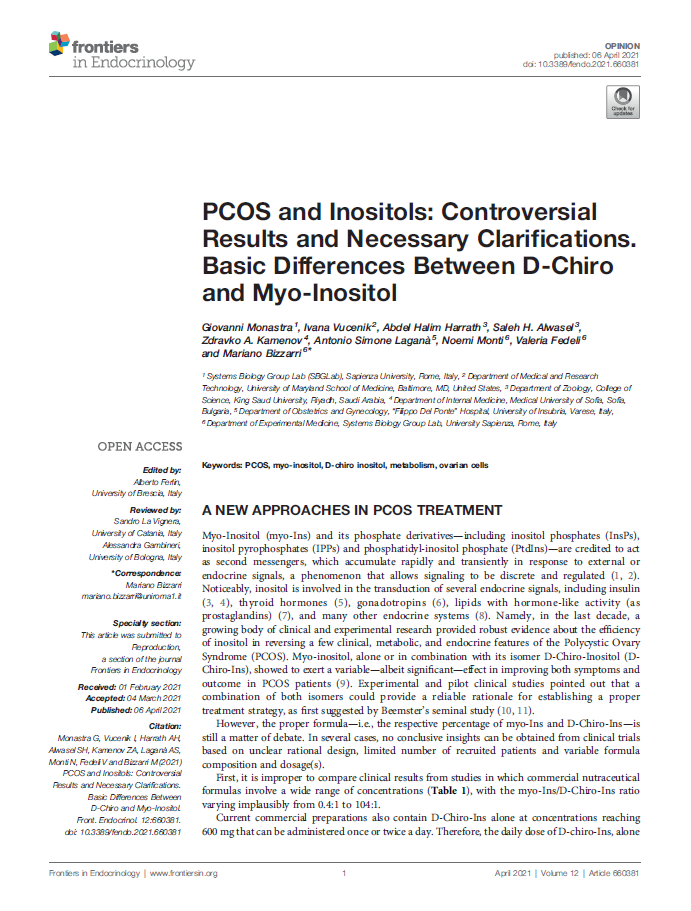Authors:
Giovanni Monastra, Ivana Vucenik, Abdel Halim Harrath, Saleh H. Alwase, Zdravko A. Kamenov, Antonio Simone Laganà, Noemi Monti, Valeria Fedeli and Mariano BizzarriMyo-Inositol (myo-Ins) and its phosphate derivatives—including inositol phosphates (InsPs), inositol pyrophosphates (IPPs) and phosphatidyl-inositol phosphate (PtdIns)—are credited to act as second messengers, which accumulate rapidly and transiently in response to external or endocrine signals, a phenomenon that allows signaling to be discrete and regulated (1, 2). Noticeably, inositol is involved in the transduction of several endocrine signals, including insulin (3, 4), thyroid hormones (5), gonadotropins (6), lipids with hormone-like activity (as prostaglandins) (7), and many other endocrine systems (8). Namely, in the last decade, a growing body of clinical and experimental research provided robust evidence about the efficiency of inositol in reversing a few clinical, metabolic, and endocrine features of the Polycystic Ovary Syndrome (PCOS). Myo-inositol, alone or in combination with its isomer D-Chiro-Inositol (D-Chiro-Ins), showed to exert a variable—albeit significant—effect in improving both symptoms and outcome in PCOS patients (9). Experimental and pilot clinical studies pointed out that a combination of both isomers could provide a reliable rationale for establishing a proper treatment strategy, as first suggested by Beemster’s seminal study (10, 11).

